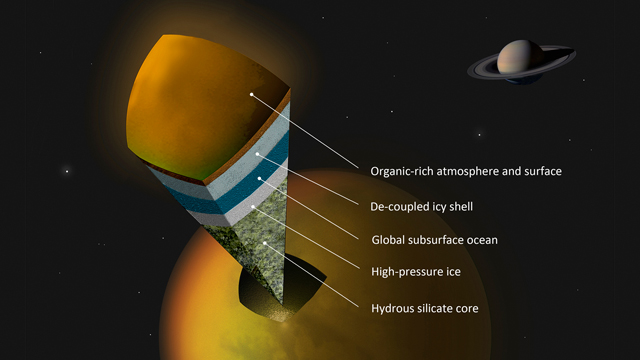
Just when you thought it was safe to go back in the water, NASA finds another ocean for us to worry about, this time on Saturn's moon, Titan.
Funny thing about oceans in the solar system, other than Earth's deep waters, they seem to be popping up where we least expect them: in the outer solar system. Should we change our preconceptions and start expecting them there?
Rewind to my childhood, when my fascination with space, and in particular the planets and moons of the solar system, was only tantalized by the distant, fuzzy images collected by Earth-based telescopes.
Looking through my small telescope, Jupiter's four Galilean moons were sparks of light, or at best, fuzzy disks showing blotches of light and dark and perhaps a little color taken "close up" by the Pioneer spacecraft. This left a lot to the imagination--which was actually part of the fascination. Who might have suspected, looking at the blurry whitish fuzz-patch of Europa, as seen by Pioneer, that there was an ocean hidden under the icy crust tens of miles deep and containing more liquid water than all of Earth's?
When the Galileo spacecraft eventually obtained images that alluded to the existence of Europa's oceans, scientists explained how heat generated through tidal flexing by Jupiter was the mechanism that kept the waters fluid. Voyager had already revealed that the moon Io experienced heating that powered its many active volcanoes.
